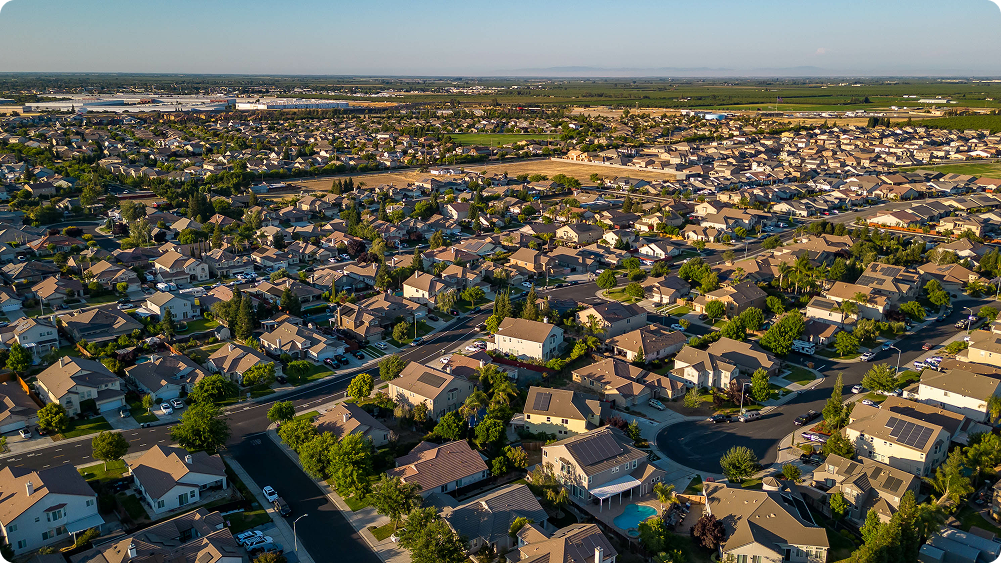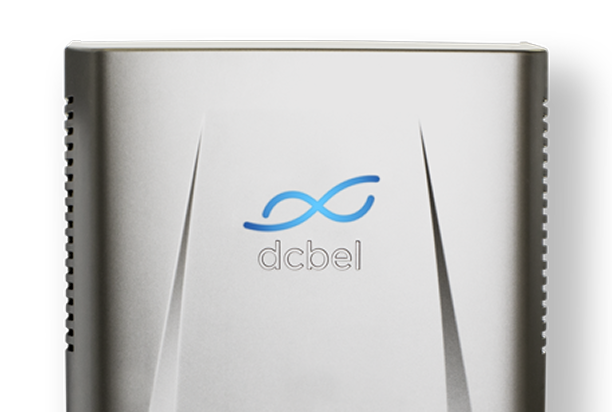It’s 5:42 in the evening and you’re cruising home in your EV. There’s no rush — you already know exactly when you’ll charge your car, and how much it will cost.
You’ve scheduled your EV to charge after 9 p.m., when electricity rates drop — but you’ve also got another option: your rooftop solar has already filled your home battery. Whether you pull from the grid or your own stored energy, you’re in control.
Meanwhile, your neighbor in a luxury SUV is circling gas stations, hoping prices haven’t jumped since yesterday. They won’t know what they’re paying until the nozzle clicks, and by then it’s too late.
It flips the script on the old assumption that EVs are less convenient than gas-powered cars. The energy landscape is changing, and homeowners are taking the lead. Home solar energy systems, especially those that make use of stationary batteries, have revolutionized residential power by putting control into the hands of homeowners.
In particular, bidirectional charging has turned EVs into powerful batteries on wheels – mobile energy storage units that are capable of providing backup power along with lower energy costs. By enabling vehicle-to-home (V2H) and vehicle-to-grid (V2G) capabilities, bidirectional charging lets you save money while keeping your EV charged and your home lights on. How great is that?
But there’s a catch: you need the right energy management system — ideally one that includes real-time energy monitoring — to really take advantage of your new assets. The new energy landscape can be bewildering, with complex pricing structures, different incentives and energy programs, and a new energy trading marketplace that could help pay your bills — if only you knew how to navigate it.
But there’s a solution that can unlock deeper savings, boost energy resilience and give you energy independence.
The Rise of Energy Resilience
It helps to understand just how the world is changing when it comes to energy. More and more Americans are worried about the reliability of their power grid, and their fears are well founded. Half of the United States is at risk of power shortfalls in the next decade. The American Society of Civil Engineers recently evaluated US energy infrastructure and graded it a D+.
There just isn’t enough transmission capacity, and there’s also a shortage of distribution transformers. It isn’t enough to cope with soaring demand and extreme weather events like wildfires, heatwaves and severe storms.
Homeowners are looking for alternatives. They feel an increasingly urgent need to take control over their home energy. Last year, 51% of respondents to an annual survey said they thought solar was a good investment. This year? That number has increased to more than 75%. That comes on the heels of a difficult year that saw a dropoff in new home solar installations.

Home solar, batteries and EVs are the tools of a new distributed energy system. Battery storage increased by 64% in 2024 over the previous year, and what motivated most purchases wasn’t just the opportunity to have a source of backup power, but the ability to store energy that can be sold to the grid when needed — a foundational step toward household-level energy trading and V2G participation. More than 500,000 homes now have battery storage, with a combined capacity of 3,028 MWh of electricity — a clear sign that energy storage is becoming mainstream.
Last year, just over half of homeowners saw solar as a smart investment. This year? It’s more than 75%.
Then there’s EVs. Cadillac expects electric vehicles to account for one of every three vehicle sales this year. That’s reflected in the growing number of places to charge your car: California now has 48% more EVs chargers than gas nozzles. With more and more EVs capable of bidirectional charging, we’re seeing the beginnings of a powerful new system of self-reliance that can also help support the grid.
EVs, Home Solar and Battery Storage: A Revolution
With solar on your roof, a battery in your garage and an EV in your driveway, you’re completely changing the way your household relates to energy. You not only have the opportunity to consume energy more efficiently but also to produce it, giving you freedom and peace of mind.
Beyond transportation, EVs are increasingly being recognized as dynamic energy assets. Thanks to bidirectional charging capabilities, they can serve as backup power sources, powering your home for up to three days in a blackout. They can help balance household energy loads, and discharge energy strategically — like during peak pricing windows — to offset household demand and reduce overall energy costs.
You not only have the opportunity to consume energy more efficiently but also to produce it, giving you freedom and peace of mind.
Instead of a passive consumer of energy, bidirectional EVs help you become an active player in your home energy strategy.
Home battery systems complement EVs and solar by storing excess energy generated during the day — especially when solar production is high and demand is low. This stored energy can then be used during peak hours, reducing reliance on the grid when electricity is most expensive. It also provides a layer of energy resilience during outages.
When paired with EVs this setup creates a flexible, distributed energy system that adapts to both household needs and external conditions.
The final piece of the puzzle is finding a way to manage all of these assets. With real-time energy monitoring, you can track the energy being produced by solar panels and regenerative EV systems. You can understand your own consumption patterns. And you can figure out exactly when your energy use is most expensive — usually during your utility’s peak rate hours.
All of this knowledge — powered by home energy AI — allows you to make smarter choices, like changing the time you use your appliances, using smart EV charging systems to charge your EV during off-peak hours, or even using only self-generated or stored energy when prices are highest. You can even participate in energy trading programs that reward you for feeding power back into the grid. You’ve now taken control of your own energy needs.
How TOU and Dynamic Rates Work
There’s just one problem: energy pricing can be difficult to understand and time consuming to manage, especially when some utilities impose hidden charges and rates fluctuate in a way that catches you off guard.
The final piece of the puzzle is finding a way to manage all of these assets.
There are peak hour traps when rates are significantly higher at some times of day, leading to unexpectedly high bills. Time-of-use or TOU billing adds another layer of complexity, with dynamic electricity rates changing throughout the day.
Then there’s tiered billing, which is when utilities charge you different rates depending on the amount of electricity you consume, organizing prices into different tiers that can lead to — you guessed it — a bigger bill when your consumption pushes you into a new tier. Utility bill credits can help offset the costs, but that just adds another layer of complexity.
“Your electric bill is more complicated than it looks,” noted Vox in a report last year. There are ways you can save, notably by switching to more energy-efficient electric appliances.
Smart appliances in particular allow for real-time energy monitoring, but when you’re also trying to understand how much power is being generated by your home solar, how much is flowing to and from your EV’s bidirectional charger and what your home battery is doing, it’s a recipe for information overload. It’s too much for one homeowner to handle.
Your Solution: the Home Energy Station
Enter the dcbel Ara Home Energy Station. It’s a comprehensive solution that helps you take control of your energy usage and costs. With an intuitive user-friendly interface, it’s easy and accessible. And Ara learns from your behavior thanks to home energy AI, anticipating exactly when you’ll need your EV to be fully charged and when you’ll need the most energy at home.
The Home Energy Station isn’t another appliance that needs to be managed: it’s the system that manages everything on your behalf.
The same AI keeps an eye on the weather, preparing your home in case of blackouts. It also maximizes energy usage by scheduling high-energy activities during off-peak hours, reducing costs associated with TOU billing.
What’s important is that it does all of this with minimal effort on your part. No more checking apps or guessing rates — just seamless, smart energy management. The Home Energy Station isn’t another appliance that needs to be managed: it’s the system that manages everything on your behalf. Ara converts solar energy so you can use it more efficiently at home or in your home battery. It manages bidirectional DC charging for your EV. And it knows exactly when and how to save you money on your energy bills.
That’s why, at 5:42 in the evening, you’re cruising home with no stress — because you know you have everything you need to navigate the new energy landscape.


